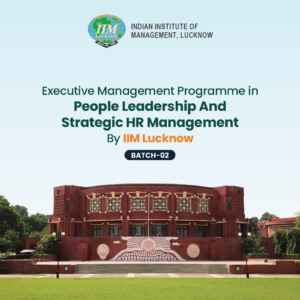Every business owner has one primary goal- growth. This growth does not only point to the revenue but also the in-house expansion of the business with respect to personnel and production. However, sometimes, this growth can come faster than anticipated. In the world of digital marketing, growth can often be fast, unpredictable and can even happen as a hybrid - remote and inhouse - model.
To match this growth, strategic human resource management measures need to fall in place. This unplanned expansion can leave HR managers scrambling to keep up. From hiring new talent to integrating them with existing teams, the challenges are endless.
However, these problems are easily navigable with open communication and a realistic plan of action in place. To be able to reach that ground, the HR needs to assess the situation and then plot around it.
Charting the Course for Growth
Unplanned expansion, while exciting, requires a clear-headed assessment from the HR department. The first step is to understand the scale of the expansion. Is it a handful of new hires, a completely new department, or the opening of a new branch? This will dictate the level of resources needed and the timeline for implementation.
Next, the HR should conduct a thorough skill gap analysis. Identify the specific skill sets required for the new positions. This analysis reveals any discrepancies between your current talent pool and the demands of the expansion. While conducting this analysis, don’t forget to factor in budget constraints. Unplanned expansions might have tighter budgetary allocations and it is the HR’s responsibility to be upfront with hiring managers about realistic timelines and costs associated with recruitment.
Plan of Action:
- Conduct meetings with leadership to understand the scope of expansion.
- Develop a skills inventory of your current workforce.
- Research salary benchmarks for required positions to ensure competitive compensation.

Prioritising and Strategizing
With a clear picture of the situation, you reach the strategizing phase. In this phase, prioritising organisational targets is key. Focus on key roles that are critical for immediate operational success. Prioritise recruitment efforts for these positions to minimise disruption to ongoing business.
Before resorting solely to external hires, explore the potential for internal mobility through promotions and upskilling drives. This fosters loyalty, increases employee satisfaction, reduces onboarding time and resources and leverages existing knowledge of the company culture.
Now, although everything might seem to sit in perfectly at the moment, contingency plans are an integral part of strategic human resource management. Develop backup strategies through team meetings with the management in case of unforeseen delays or hiccups. Consider solutions like temporary staffing agencies or cross-training existing employees to fill skill gaps temporarily so that the company does not bear the brunt of unexpected crises.
Although the plan might seem foolproof on your end, communication is key. Keep all stakeholders informed, including leadership, hiring managers and current employees of every move that you are making. Transparency builds trust and ensures everyone is on the same page regarding resources and timelines.
Plan of Action:
- Identify a list of critical roles needed for immediate operation.
- Evaluate training opportunities for existing employees to fill skill gaps.
- Develop a communication plan to keep stakeholders informed throughout the process.
The Recruitment Challenge
Unplanned expansion demands agility in the recruitment process and it is here that traditional methods with lengthy interview processes will not present the ideal scenario. To deal with this, explore faster avenues like targeted online platforms, employee referral initiatives, internship programs and attending relevant job fairs.
Employer branding matters more than ever during unprecedented growth. To do this, highlight the company's growth potential and exciting opportunities to attract top talent. Streamline interview processes with clear evaluation criteria such that even if you don’t end up hiring certain candidates, they can always have the option to apply to roles better suited for them if the vacancy ever arises. Utilise technology for remote video interviews to widen your candidate pool.
Cultural fit is paramount during rapid change. Finding candidates with the right skills is important, but prioritising those who align with your company values and can adapt to a growing environment is crucial.
Plan of Action:
- Leverage online job boards and social media platforms for targeted recruitment.
- Develop a compelling employer branding strategy highlighting growth opportunities.
- Implement a structured interview process with clear criteria for candidate evaluation.
Onboarding and Integration
Even with a fast-paced expansion, a structured onboarding process is essential. Provide new hires with clear expectations, detailed company information and the resources they need to succeed.
Mentorship programs can be invaluable and must hold a place in your plans for strategic human resource management. Pair new hires with experienced colleagues who can guide them, answer questions and foster a sense of belonging. Create open communication channels for new hires to express concerns or ask questions. Encourage regular feedback to identify and address any onboarding issues.
Plan of Action:
- Develop a comprehensive onboarding program tailored for new hires.
- Implement a mentorship program to connect new hires with experienced colleagues.
- Conduct regular check-ins with new hires to ensure a smooth onboarding experience.
Managing Existing Employees
Sudden expansion can lead to feelings of uncertainty and anxiety among existing employees. Implement a change management strategy with clear communication about the expansion's purpose and impact.
Highlight how the expansion creates career development opportunities for existing employees. Offer training programs and upskilling initiatives to help them adapt to the evolving environment.
Employee engagement is crucial during expansion. Maintain it by acknowledging contributions, recognizing efforts and rewarding your team's adaptability.
Plan of Action:
- Conduct open forums to address employee concerns about the expansion.
- Offer training and upskilling opportunities to help existing employees develop new skills.
- Recognize and reward employees who demonstrate adaptability and positive contributions.
Conclusion
Expansions can be challenging, especially when it is not predicted. But it also presents a unique opportunity for the HR department to take centre stage and drive positive change within the organisation. With strategic human resource management, HR managers can navigate this period effectively, ensuring a smooth transition for everyone involved.
Now someone who is interested in exploring these strategies further must look to enrol in a certified course to enhance their skills and build an employable resume fostering them. If that is you, then check out the Executive Management Program by IIM Lucknow in collaboration with Imarticus. This course is directed at People Leadership and Strategic HR Management, one of the booming career options available today.








